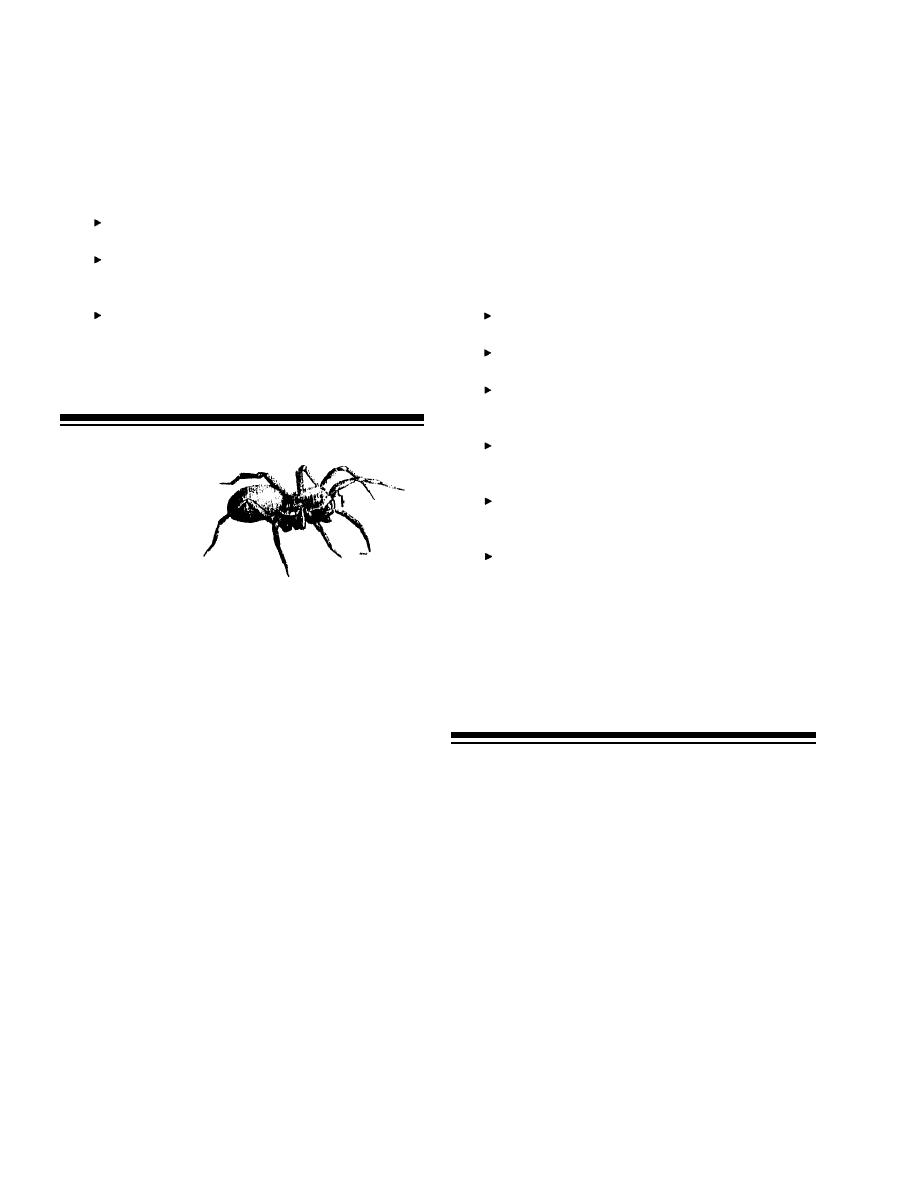

Custom Search
|
|

|
||
 even change their color to more closely align with the
Where structures are lighted near aquatic areas in
flower's color. Crab spiders, like Jumping spiders, are
certain seasons, midges are attracted to the light and
often brought inside in cut flowers which they abandon
drive the increase in spider populations. Large spider
when food becomes unavailable. They can be pests
populations harm limestone and marble structures and
wherever flowers are introduced.
statuary with feces and webbing.
When this occurs:
Pest Management of Wandering Spiders
Pesticide use is not effective. Explore
habitat alteration.
If called on to eliminate wandering or nomadic
Locate the source of midge populations
spiders, the best action is to locate specimens, identify
and identify their habits of emergence,
them, assure clients that they are not poisonous, and
laying, etc.
tell clients on how they got inside.
Recording flight times and periods.
Tighten under doors and around
Time lights to turn off during the main
window screens.
flight period. Alternative placement for
Caulk door and window frames and all
lighting should be considered as
wall penetrations.
required for public safety.
Remove vegetation and litter from the
foundation, doorways, and window
wells.
Turn off house, building, or area lights
WANDERING SPIDERS
that attract flying insects, especially
Wolf Spiders
midges.
Advise clients to look carefully at
flowers brought in from the garden and
from commercial greenhouses.
Assure clients that they can swat or
vacuum spiders without harm.
The hairy, fleet, wolf spiders are very common
Pesticide application is very difficult; indoor
outdoors under leaf litter, rocks, and logs. When they
treatment is usually effective only if the pesticide
come inside, they normally stay on the ground floor
contacts the spider directly. This means the technician
and are active in dim light. Large Wolf spiders often
must have clear access to all spider habitats. Unless
frighten people. If handled, they give a painful bite,
efforts are made to exclude spiders (e.g., tighten gaps
but it is not dangerous.
around entrances, and observe material being brought
into the facility), spiders will reenter.
Jumping Spiders
Jumping spiders are active during the day and are
common around windows where they feed on insects
attracted to natural light. Jumping spiders are usually
SUMMARY
small, up to l/2 inch in length. They have husky
Spiders are distinctive arthropods in the class
cephalothoraxes and are brightly colored, sometimes
Arachnida. They have two regions to their body -- the
iridescent. They hold their front legs up in front of
front one is the cephalothorax on which are located
them when approached and move in quick rushes,
eyes, mouthparts and four pairs (8) of legs. The rear
jerks or jumps. They often enter buildings from shrubs
region is the abdomen at the tip of which is located
near windows, or ride in on plant blossoms.
silk spinning organs. Spiders, for the most part, live
Crab Spiders
outside; some enter structures and dwellings. A few
can deliver bites that are debilitating or even fatal.
Small Crab spiders are dark or tan; some are
They spin webs in which to live or capture prey; these
lightly colored orange, yellow, or creamy white. Their
webs are considered unsightly indoors. For the most
legs extend out from their sides causing them to scuttle
part spiders are beneficial to humans, capturing and
back and forth in a crablike fashion. These spiders
eating many insect pests.
hide in flower blossoms and ambush insects. Some can
Module Two, Chapter 3, Pg 6
|
 
|
|
 |
||